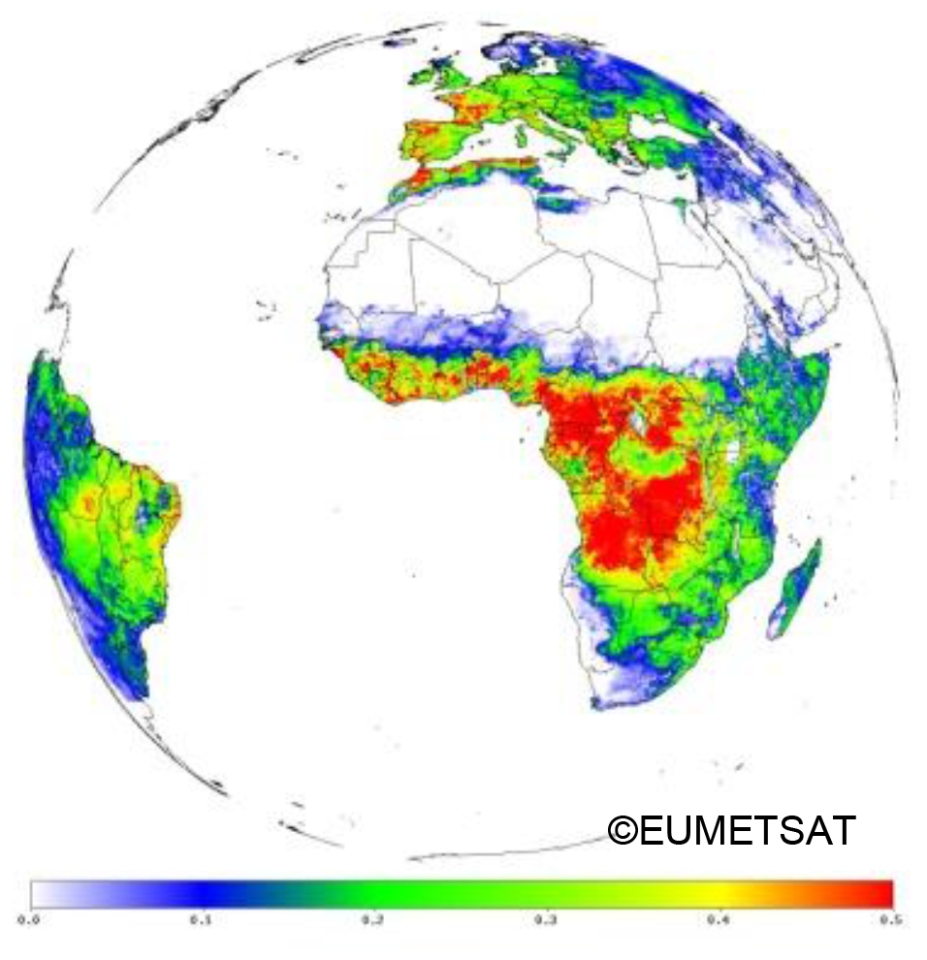Context and objectives
Royal Meteorological Institute (RMI) of Belgium, in the framework of EUMETSAT's “Land Surface Analysis-Satellite Application Facility” (LSA-SAF, http://landsaf.meteo.pt), has developed a model for the estimation of evapotranspiration (ET). In this model, ET is estimated from remote sensing (RS) data obtained from the Spinning Enhanced Visible and Infrared Imager (SEVIRI) onboard the Meteosat Second Generation (MSG) satellite as well as from numerical weather predictions and land cover information. The model is operational and delivers ET estimations over the whole field of view of the MSG satellite (Europe, Africa and Eastern South America) every 30 minutes. spatial resolution is 3 x 3 km at sub-satellite point and about 4 x 5 km in continental Europe.
The temporal resolution of this product and its delivery at near-real time are unprecedented. Nevertheless, its spatial resolution may constrain its full exploitation for various applications; especially in regions like Europe with a high degree of landscape fragmentation. This study aimed at testing methodologies to combine RS imagery (geostationary and polar orbit satellites) for the estimation of ET such that the spatial resolution of the final product is improved while keeping the temporal signal from SEVIRI. In particular, the study consisted in the implementation and evaluation of two approaches for combining the operational ET estimations with RS data containing information over vegetation parameters and captured by polar orbit spaceborne sensors.
Project outcome
This research verified that combining the MSG-ET and RS data from polar-orbit satellites can lead to estimates of ET at moderate spatial resolution. The validation exercises and the display of modelled spatial patterns of ET suggested that the ab initio approach is the most promising technique to gain spatial detail in the estimation of ET. The a posteriori approach showed great potentials especially in areas where soil moisture is not limiting the ET rate and LAI development is the main driver of ET. The results also showed the usefulness of combining MSG and SPOT-vegetation products to calculate net radiation, a covariate in the a posteriori approach.
The obtained results raised the need of more research on the role of LAI and soil moisture in the involved ET models. Additionally, as the spatial resolution of RS products increases, the feasibility of increasing the detail of the land cover information should be investigated.
MOD16 product was not designed to supply daily ET data. In this respect, the product is not an alternative for the purposes of this study. Nevertheless, the product represents an interesting alternative as reference for further research and for applications focusing on the analysis of time frames of 8 days and more.
| Project leader(s): | IRM/KMI - Royal Meteorological Institute of Belgium | |
| Location: |
Continent:
|
|
| Related presentations: | ||
| Related publications: | ||
| Website: | http://hydroland.meteo.be/meteo/view/en/16012578-EVA3M.html | |
